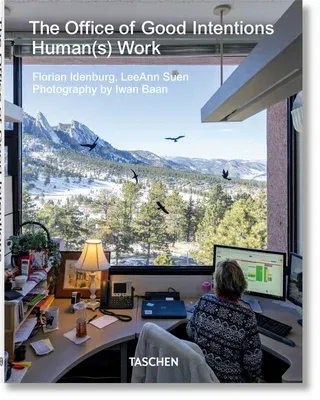Immerse yourself with architects Florian Idenburg and LeeAnn Suen as
they journey through a wide-ranging collection of the objects, systems,
and buildings that have occupied the American office space since the
advent of the internet. Through stories and speculations, Idenburg and
Suen expose the relationships between space, work, and people, and
explore the intentions that have driven the development of office design
for working humans.
In twelve essays, this book examines the spatial typologies and global
phenomena that have defined the office in the last half century. Topics
include the return of the work club, the rise of the corporate festival,
the way of the charismatic guru, the shattering of the time clock, and
the design of playgrounds for work. We cycle through Frank O. Gehry's
radical, playful spaces for digital nomads in the advertising world,
stagger under the weight of stacks of punch cards, feel the fit of our
bodies in the Aeron Chair, answer the phone in Hugh Hefner's bed, and
scroll through Lil Miquela's feed. Photographic essays by Iwan Baan
provide a visual post-occupancy report on a range of canonical office
projects, such as Marcel Breuer's IBM campus in Florida and the Ford
Foundation's urban garden in Manhattan. Four intervening catalogs offer
collections of experimental workplace products, augural advertisements
for office building components, digital office components, and
renderings of speculative workplaces; each catalog bridges the reality
of the office and how we imagine its alternatives.
This book is a theoretical backdrop for architects as much as it is for
businesspeople and employees. With curiosity and skepticism, it looks at
the spaces and solutions that have been designed for human work, tracing
the transformation from work to occupation, from punch cards to
"playbor," from today's lived experience to tomorrow's unpredictable,
imagined futures.

